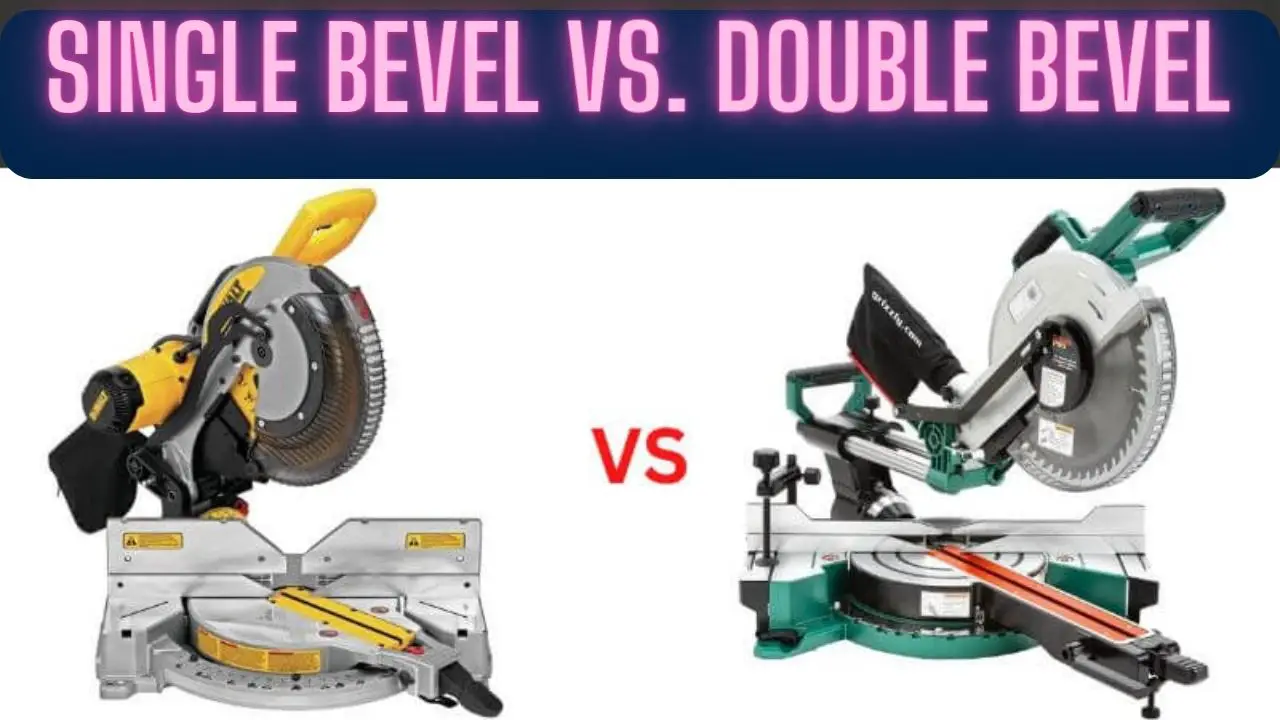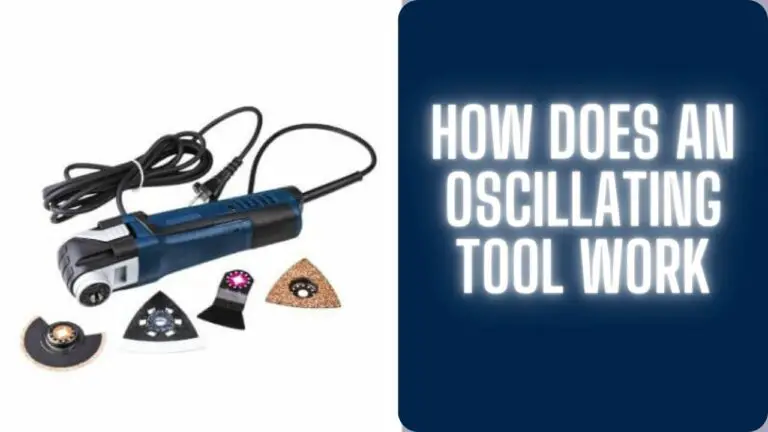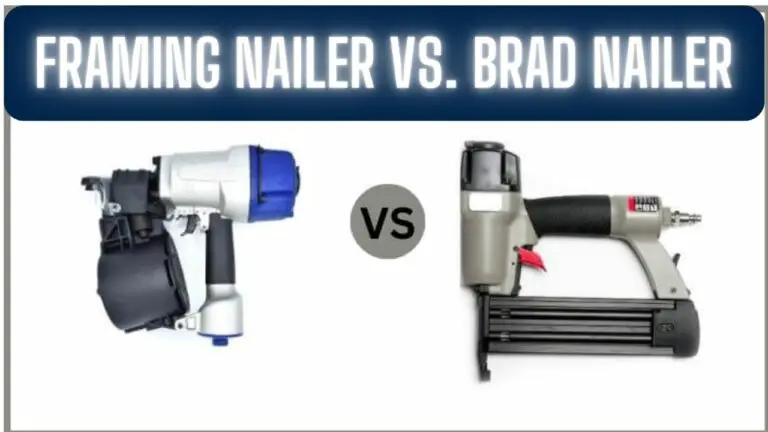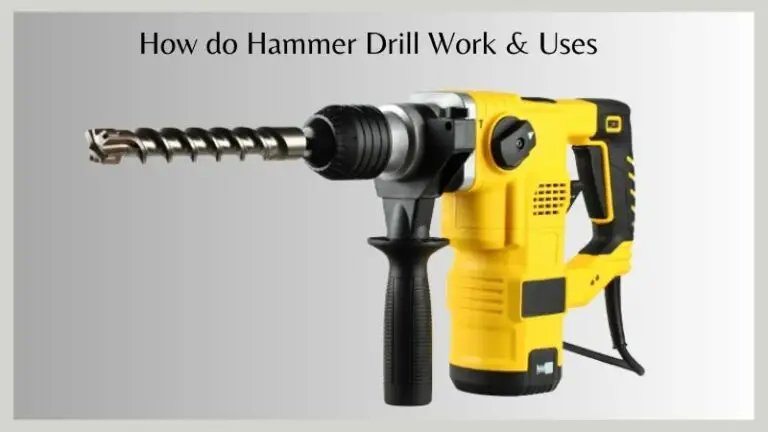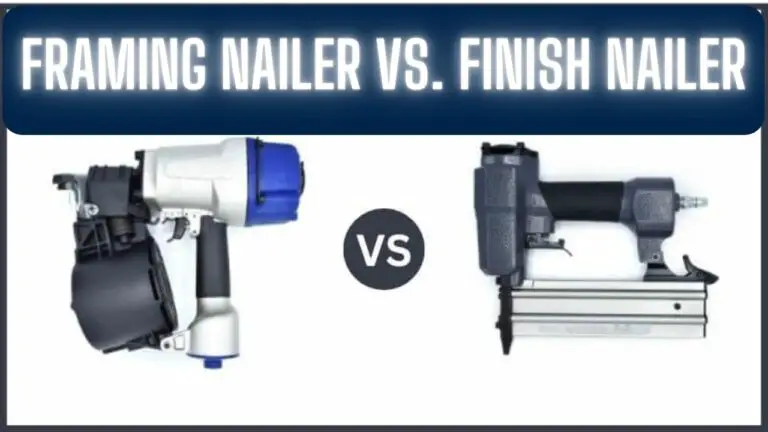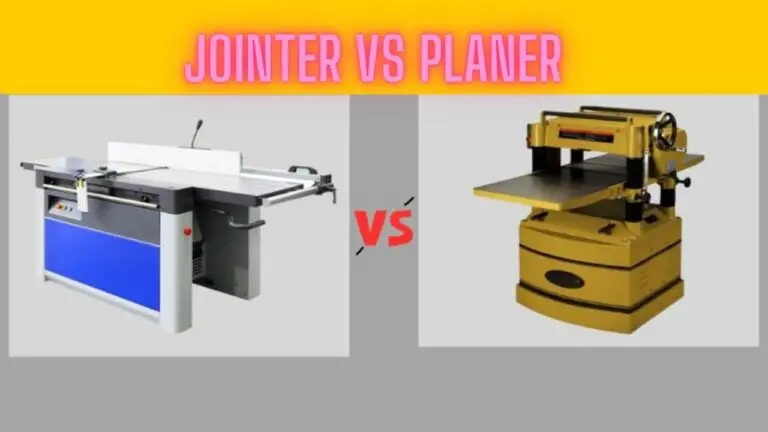Single Bevel vs. Double Bevel: Single Bevel vs. Double Bevel Miter Saw
Introduction
When it comes to woodworking and carpentry, choosing the right type of bevel for your tools and projects is crucial. Bevels are angled cuts made along the edge or surface of a workpiece, and they serve various purposes. Two common types of angles are the single bevel and the double bevel. Let’s explore the differences between these two bevel types and their applications in woodworking.
Single Bevel:
1. Definition:
- A single bevel, often referred to as a “single bevel cut” or “single bevel edge,” is a cut made at an angle along one edge or surface of a workpiece. It results in a flat surface meeting an angled surface.
2. Characteristics:
- Single bevels create a wedge-like shape on the edge of the workpiece, with one side remaining flat and the other side angled.
- These bevels are commonly used for decorative purposes, adding detail and visual interest to edges of furniture, cabinets, and other wooden items.
- Single bevels are also used for chamfering, where the sharp edge of a workpiece is slightly angled or beveled for safety or aesthetics.
3. Applications:
- Decorative edges on tables, cabinets, and shelves.
- Chamfering the edges of doors and windows for improved aesthetics and safety.
- Creating facets or angled surfaces for design elements.
Double Bevel:
1. Definition:
- A double bevel, also known as a “double bevel cut” or “double bevel edge,” involves making cuts at angles along both edges or surfaces of a workpiece, resulting in two angled surfaces meeting at a sharp edge.
2. Characteristics:
- Double bevels create a V-shaped groove or a pointed edge along the workpiece.
- They are often used for joinery, where two workpieces with complementary double bevels are joined to create a strong and secure connection.
- Double bevels are commonly found in various woodworking joints, including dovetails, miters, and certain types of lap joints.
3. Applications:
- Creating precise and strong woodworking joints.
- Crafting decorative joinery details like dovetail joints in fine woodworking.
- Producing clean and accurate angles in carpentry and cabinetry.
Choosing Between Single Bevel and Double Bevel:
The choice between a single bevel and a double bevel depends on the specific project requirements and design goals:
- Single Bevel:
- Use single bevels for decorative edges and chamfering to add visual interest and safety features to your woodworking projects.
- Ideal for projects where a flat surface meets an angled one for aesthetic or functional reasons.
- Double Bevel:
- Choose double bevels when you need precise and strong joinery, especially in fine woodworking and carpentry.
- Essential for creating complex woodworking joints that require angled surfaces for secure connections.
In summary, single bevels are primarily used for decorative purposes and chamfering, while double bevels are essential for creating strong and precise joinery in woodworking. Understanding the differences between these two types of bevels helps woodworkers select the appropriate technique and achieve the desired results in their projects.
Single Bevel vs. Double Bevel Miter Saw
When it comes to making angled cuts in woodworking and carpentry, miter saws are essential tools. Within the realm of miter saws, you’ll find both single bevel and double bevel models. Understanding the differences between these two types of miter saws can help you select the right tool for your specific projects.
Single Bevel Miter Saw:
A single bevel miter saw is designed to make angled cuts in one direction—either to the left or the right. Here are the key features and advantages:
- Cutting Range: A single bevel miter saw allows you to make bevel cuts in one direction, typically up to 45 degrees. You can make both miter and bevel cuts, but you’ll need to flip the workpiece to change the direction of the bevel cut.
- Simplicity: These saws are simpler to operate and typically more affordable than their double bevel counterparts. They are a great choice for beginners or those who need to make occasional bevel cuts.
- Applications: Single bevel miter saws are suitable for a wide range of projects, including framing, crown molding, baseboards, and general woodworking tasks where bevel cuts are needed in one direction.
Double Bevel Miter Saw:
A double bevel miter saw, also known as a dual bevel miter saw, offers more versatility when it comes to making bevel cuts. Here’s what sets them apart:
- Cutting Range: Double bevel miter saws allow you to make bevel cuts in both directions—left and right—without needing to flip the workpiece. This means you can achieve bevel cuts in any direction quickly and easily.
- Efficiency: These saws are highly efficient for projects that require a variety of angled cuts, as you can switch between bevel directions without repositioning the workpiece. This saves time and effort.
- Accuracy: Double bevel saws often have features like laser guides and digital displays, enhancing the precision of your cuts. They are favored by professionals for intricate woodworking tasks.
- Applications: Double bevel miter saws are commonly used for tasks that demand precise bevel cuts in both directions, such as making intricate furniture, cabinetry, and complex molding.
Choosing the Right Miter Saw:
- Project Scope: Consider the scope of your projects. If you primarily need bevel cuts in one direction for simpler tasks, a single bevel miter saw may suffice. However, if you require versatility and efficiency for complex projects, a double bevel saw is the better choice.
- Budget: Single bevel miter saws are generally more budget-friendly, making them suitable for hobbyists and DIY enthusiasts. Double bevel saws are typically pricier due to their added features and capabilities.
- Experience Level: Beginners may find single bevel miter saws easier to operate. Professionals and experienced woodworkers often prefer the convenience and precision of double bevel saws.
- Workspace: Consider the available space in your workshop. Double bevel miter saws may require more room due to their larger size and added features.
In conclusion, the choice between a single bevel and double bevel miter saw depends on the nature of your projects, your budget, and your experience level. Both types of saws have their merits, and selecting the right one will ensure efficient and accurate angled cuts for your woodworking tasks.
FAQS
What is a single bevel miter saw, and what is it used for?
A single bevel miter saw is a cutting tool used in woodworking and carpentry to make angled cuts in one direction—either to the left or the right. It is often used for tasks such as cutting molding, framing, and general woodworking projects that require bevel cuts in a single direction.
What is a double bevel miter saw, and how does it differ from a single bevel saw?
A double bevel miter saw is a cutting tool that allows you to make angled cuts in both directions—left and right—without needing to flip the workpiece. In contrast, a single bevel saw can only make bevel cuts in one direction and requires flipping the workpiece to change the direction of the cut. Double bevel saws are known for their versatility and efficiency in making precise bevel cuts.
When should I use a single bevel miter saw?
Use a single bevel miter saw when your projects primarily require bevel cuts in one direction. They are suitable for tasks like cutting baseboards, crown molding, and framing where bevel cuts are needed in a single orientation. Single bevel saws are often more budget-friendly and are a good choice for beginners or occasional users.
When should I use a double bevel miter saw?
A double bevel miter saw is ideal for projects that demand versatility and efficiency in making bevel cuts. If your woodworking tasks involve intricate furniture, cabinetry, or complex molding where precise bevel cuts are needed in both directions, a double bevel saw is the better choice. They are favored by professionals for their convenience and accuracy.
Are double bevel miter saws more expensive than single bevel saws?
Yes, double bevel miter saws are typically more expensive than single bevel saws. This price difference is due to their added features and capabilities, such as the ability to make bevel cuts in both directions and enhanced precision features. Single bevel saws are generally more budget-friendly.
Which type of miter saw is better for a beginner woodworker?
For a beginner woodworker, a single bevel miter saw is often a more straightforward and budget-friendly choice. It allows you to learn the basics of making bevel cuts while being less complex to operate. As you gain experience and tackle more intricate projects, you may consider upgrading to a double bevel saw for added versatility.
Can I achieve the same results with a single bevel saw by flipping the workpiece?
Yes, you can achieve similar results with a single bevel saw by flipping the workpiece to change the direction of the bevel cut. However, this process can be more time-consuming and may require additional precision to align the cuts accurately. Double bevel saws offer the convenience of making bevel cuts in both directions without repositioning the workpiece, saving time and effort.

